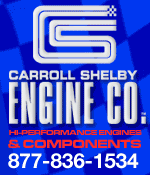Years ago, I spoke with John Vermeersch at Ford, regarding the development of an engine for my 1971 Mach 1. I was curious regarding acceptable street power levels in low-deck Windsor and Lima blocks. He said he had a 1200+ horsepower "daily driver" he took to work everyday; when I expressed incredulity, he asked how many miles per week I intended to drive. I answered "about 500 peak, no less than 350 ever." He was astonished: apparently, he lived less than a mile from his work.
It's a totally different thing, of course, but my parents put 516,000+ miles on their 1992 Chevy Astro EXT cargo minivan (4.3 V6, 190 hp) in something like 46 months (maybe quite a bit fewer, but I'd have to do research to determine exactly). It's still running as strong today as a brand new van; the only serious problem was the water pump bolts had to be retightened around the 300k mark. Other than that, it's just had reasonably good PM -- meaning:
--
oil filter &
oil change "about" every 3k miles and
-- about once a year, an air filter and spark plug change and
-- about every 16 months, serpentine belt and coolant change.
Granted, all that was in connection primarily with commercial service, during which their van was frequently loaded with 4,000 or more pounds of cargo. Although my own vehicles have seen similarly severe service, following my parents' example has given me similar service out of most of my vehicles.
So, based on these ... admittedly lengthy ... assumptions (
-- the use of 87 PON gasoline as the fuel, and
-- any (cast iron, compact graphite, aluminum, etc.) commercially available Ford or Ford-based (tall or short deck height) block; this allows aftermarket, non-standard bore spacing blocks (example: a big block having 5.0-inch bore centers); however, the bore spacing of the block must not be altered; offset boring/honing is not permitted; and
-- allowing any commercially available cylinder heads (including esoteric designs like the Arao, etc.); standard polishing and porting is okay, but substantially re-engineering or relocation of any of the ports is prohibited, and neither valve locations nor angles may be altered; and
-- any commercially available reciprocating assembly (pretty much any rod length, any stroke, any bore for which there are "off the shelf" rings available);
-- no nitrous oxide, alcohol and/or water injection or other "momentary" power booster, but
-- any number and/or combination of commercially available superchargers and/or turbochargers is okay, and
-- any number and/or combination of commercially available intercoolers and/or aftercoolers is okay (liquid and/or air; however, the "momentary power booster" prohibition applies: temporary chilling of the intercooler/aftercooler allows for artificially inflated numbers, and is therefore not okay); and
-- any commercially available ignition system; if computerized, must use only standard programming; multiple-plug technology is permitted to the extent that it meets the foregoing requirements affecting related systems; and
-- any commercially available carburetion and/or fuel injection system(s); if computerized, must use only standard programming; multiple injectors are permitted; direct injection technology is permitted to the extent that it meets the foregoing requirements affecting related systems; and
-- any commercially available lubrication system components and commonly available lubricating fluids; however, "bait and switch" (ex.: using a thinner-than-recommended
oil to obtain better numbers) lubing is not permitted, and
-- temperature regulation of coolant and lubricating fluids is limited to methods having obvious RPO utility (commercially available thermostatically-controlled heaters, louvers/shutters, and coolant valving; commercially available heat exchangers/radiators); if computerized, must use only standard programming; and
-- maximum exhaust pipe diameter is 6 inches, and the exhaust system may be fabricated from any commercially available tubing; the use of coatings, wraps and/or other insulating materials is allowed; however, any catalytic converters must be adequately ventilated and shielded; and
-- any exhaust system design is acceptable; however, length and sound must be 50-state legal when installed with the engine in a production vehicle; exhaust cut-outs, muffler-bypass and/or catalytic converter-bypass systems are not acceptable;
-- exhaust systems may be designed to provide enhanced performance as a result of integration into an aerodynamic package; however, testing will not simulate the effect of such airflow
-- package must be emissions compliant when retrofitted into a vehicle manufactured no earlier than 1973 (e.g.: this should cover all vehicles up to at least 1973 year models)
), with net power to the flywheel/flexplate being measured, here are my questions:
What package provides ...
1) the smoothest idle?
2) the smoothest transition / greatest tractability across the powerband?
3) the maximum net power?
4) the maximum average power across the usable rpm range?
5) the maximum average power across the upper 60 percent of the usable rpm range?
6) the maximum average power across the upper 50 percent of the usable rpm range?
7) the maximum average power across the upper 40 percent of the usable rpm range?
8) the maximum average power across the upper 30 percent of the usable rpm range?
9) the maximum average power across the upper 20 percent of the usable rpm range?
10) [substitute into the foregoing questions (numbers 2 through 9) as follows: replace "maximum" with "minimum", and replace "power" with "brake specific fuel consumption"]
11) the lowest idle emissions?
12) [substitute into the foregoing questions (numbers 2 through 9) as follows: replace "maximum" with "minimum", and replace "power" with "emissions"], where "emissions" refers to gases and fluids measured for 50-state emissions compliance
13) if properly maintained, the greatest austere-service MTBO/MTBF (mean time between overhaul/failure)?
Yeah, I wish the Coates heads were available: I'd luuuuuvvvvv to see them on a poked-and-stroked 460, especially if I could incorporate some of my own ideas with them -- but that's reaching way, way out there.
Just food for thought, I suppose -- but there's bound to be some serious bench racers around. Opinions, anyone?
















 Linear Mode
Linear Mode



